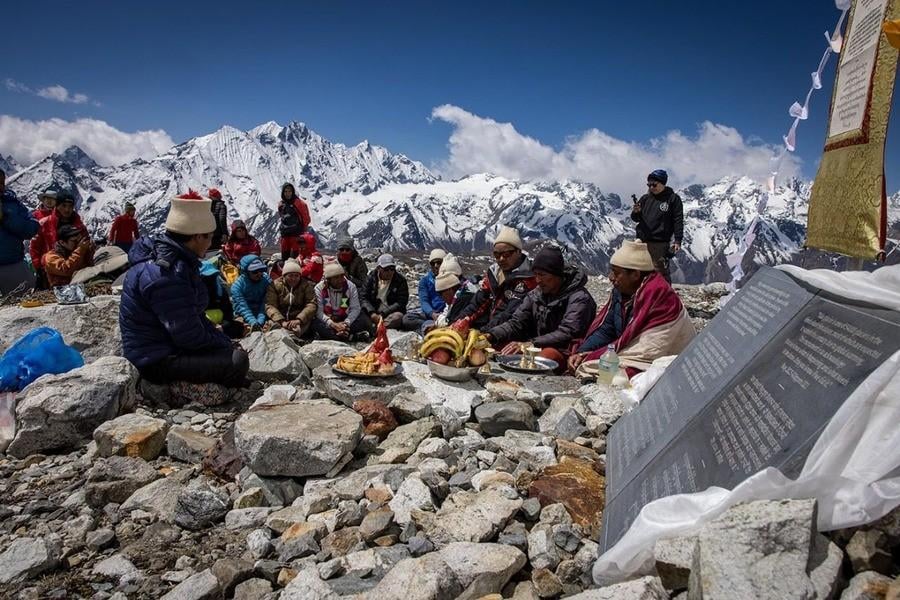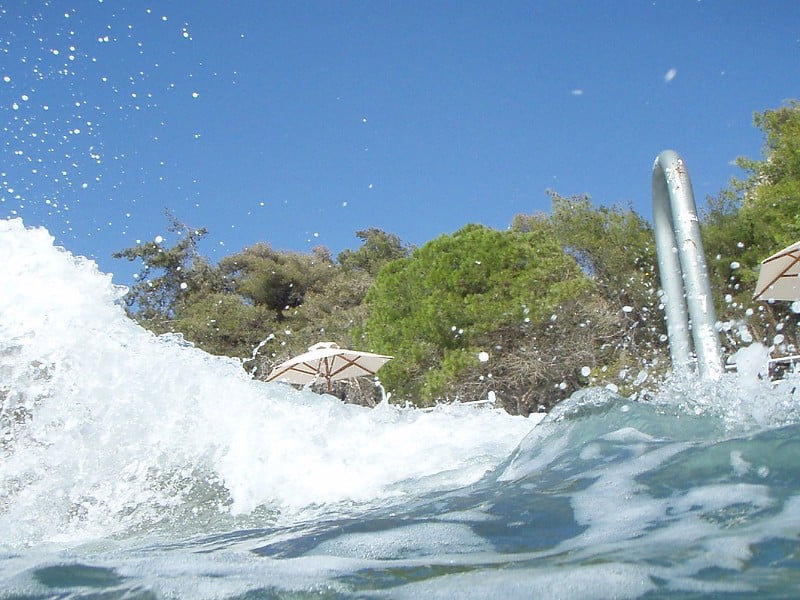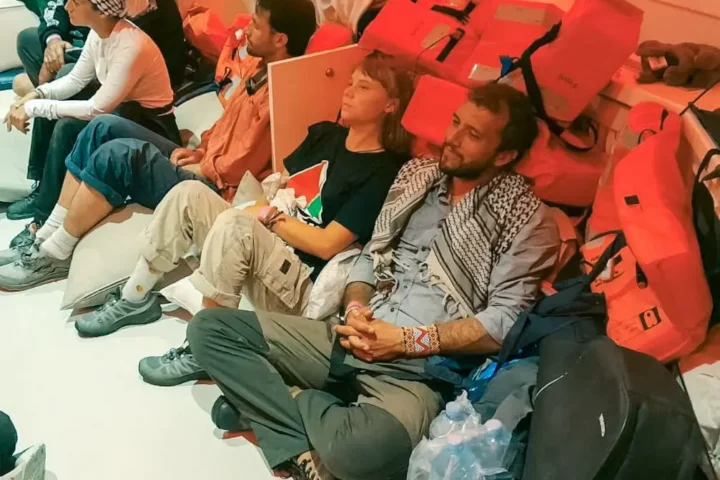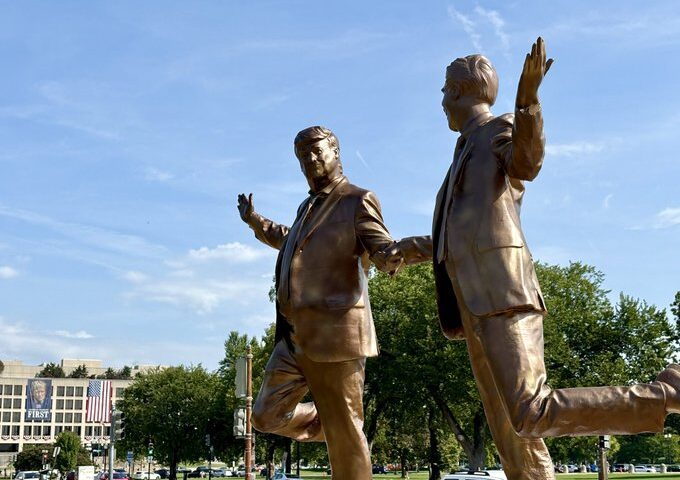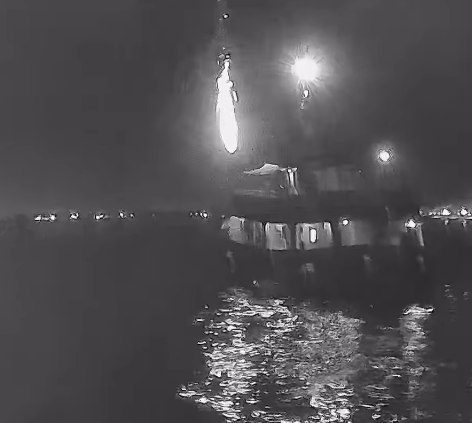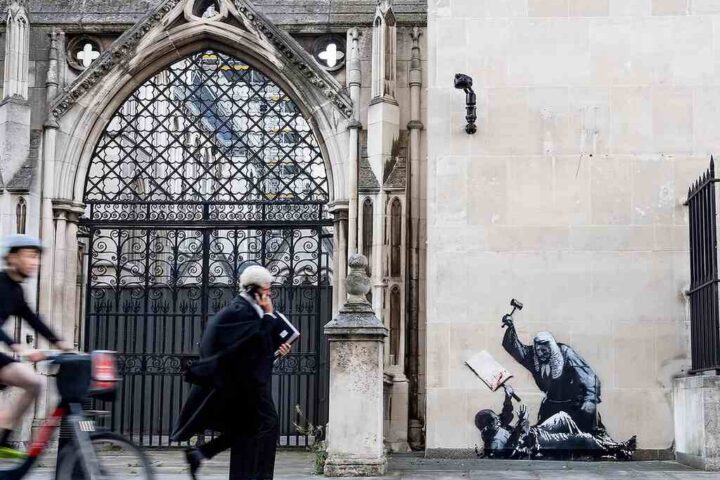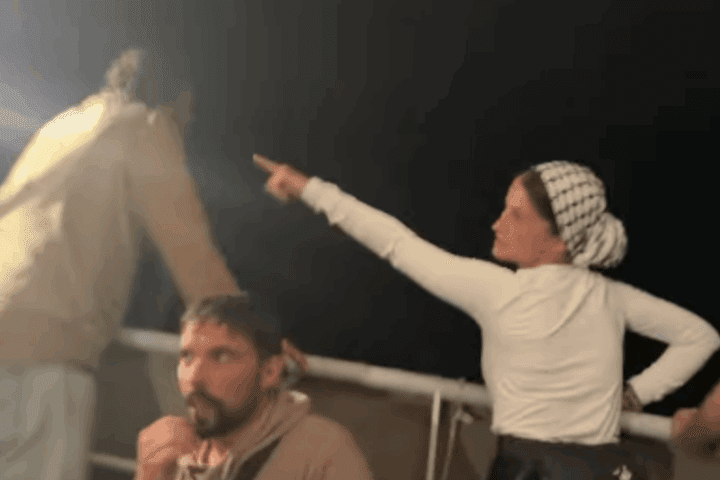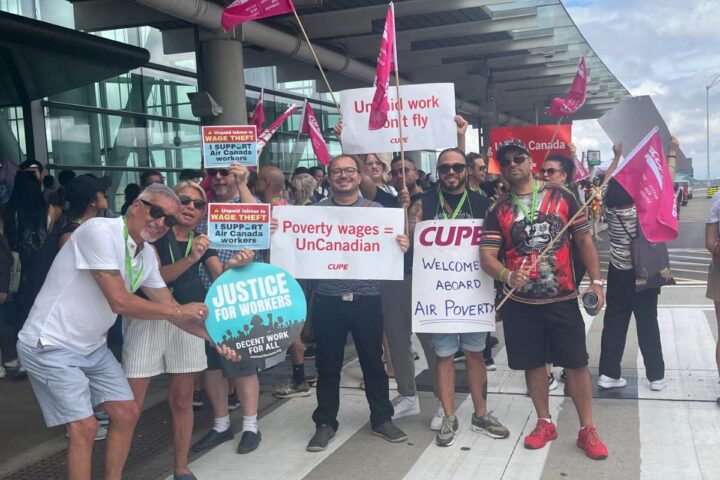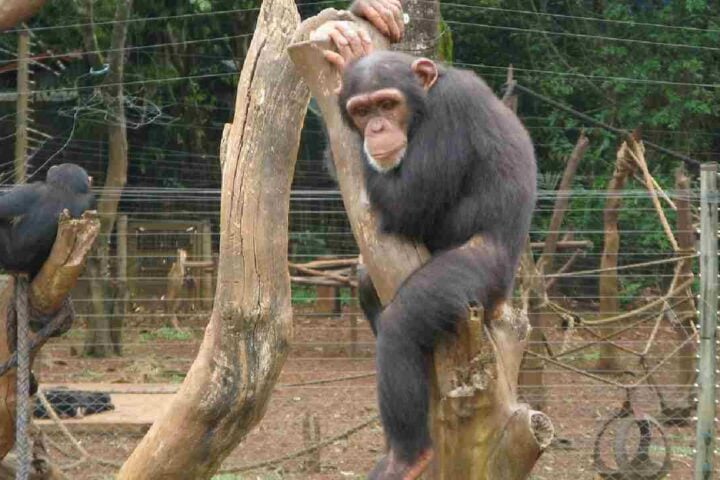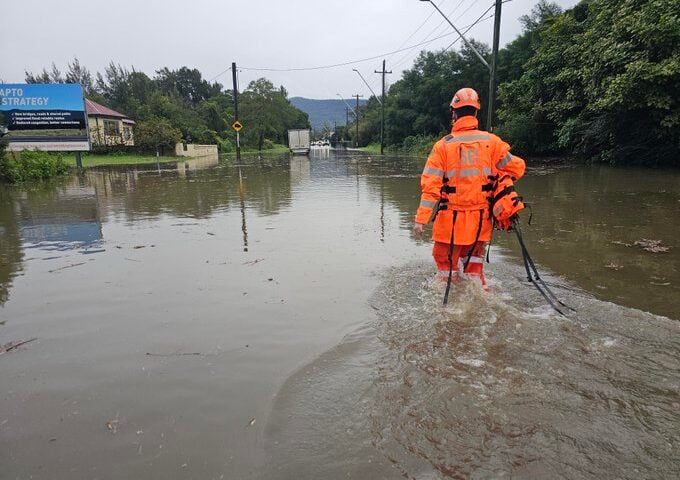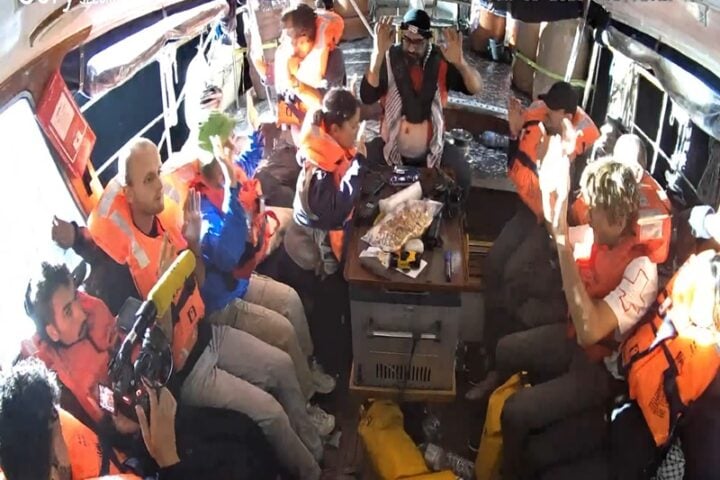High in Nepal’s Langtang Valley, over 50 people trekked through thin mountain air to reach Yala Glacier on May 12, 2025. They came carrying granite memorial plaques and prayer flags to honor an ice mass that has become a stark symbol of our changing climate. What they witnessed was a glacier in its final phase – a body of ice that has shrunk by 66% since the 1970s and retreated 784 meters up the mountain.
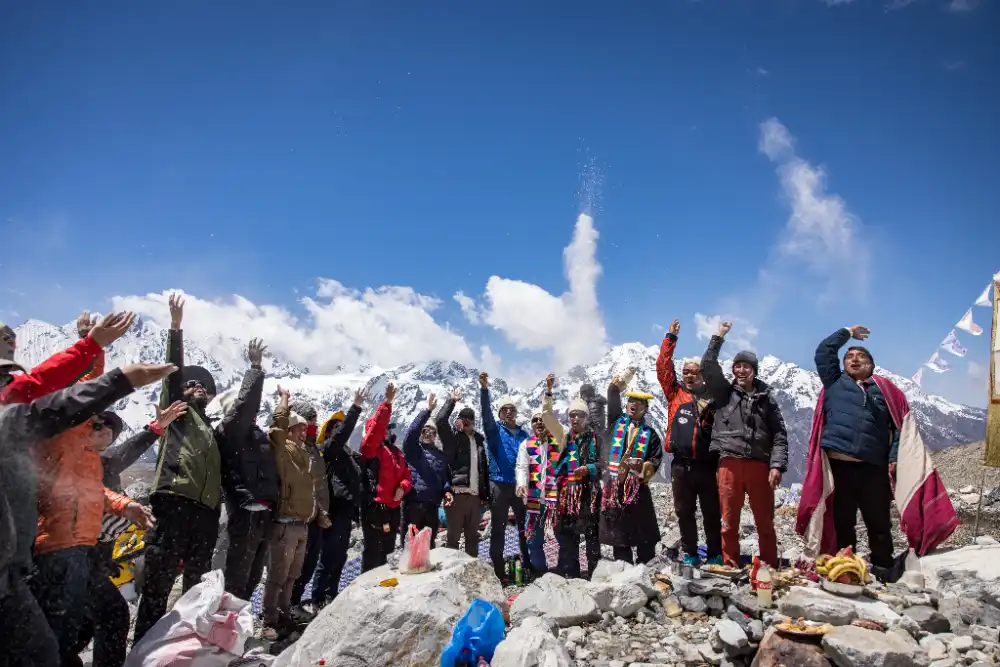
Yala Glacier, located between 5,170 and 5,750 meters above sea level, has been monitored continuously since 1974, making it one of just seven glaciers in the entire 3,500-kilometer Hindu Kush Himalaya arc with such long-term annual measurements. The International Centre for Integrated Mountain Development (ICIMOD) organized this tribute ceremony, bringing together Buddhist monks, local residents, and glacier experts from India, China, Bhutan, and Nepal.
Living Laboratory Faces Final Chapter
“In the 40 years I have studied this glacier, I have seen it halve with my own eyes. We worry that the next generation might not be able to see it,” said Sharad Prasad Joshi, a cryosphere specialist at ICIMOD and Nepal’s national correspondent for the World Glacier Monitoring Service (WGMS).
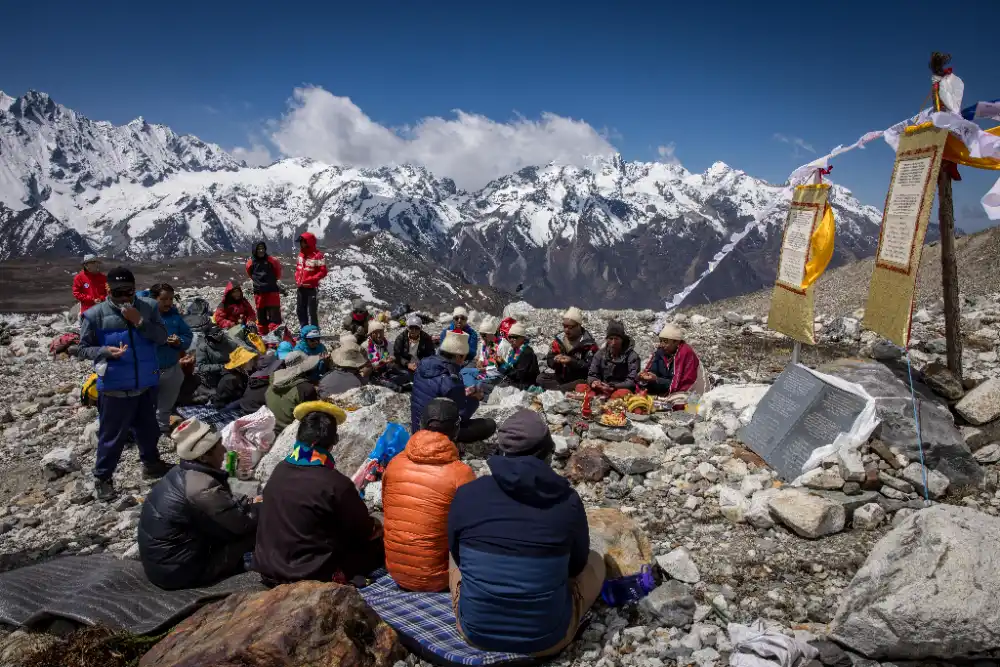
Speaking on the eve of the tribute event, Joshi provided a deeply personal account of his relationship with the glacier: “On the one hand, I’m incredibly proud that this glacier has served as an open book, to train the next generation of researchers in this field in a region where our capacity to monitor and therefore predict and act on what is happening to these vital water reserves continues to lag so far behind that of other countries’ and cryosphere zones.”
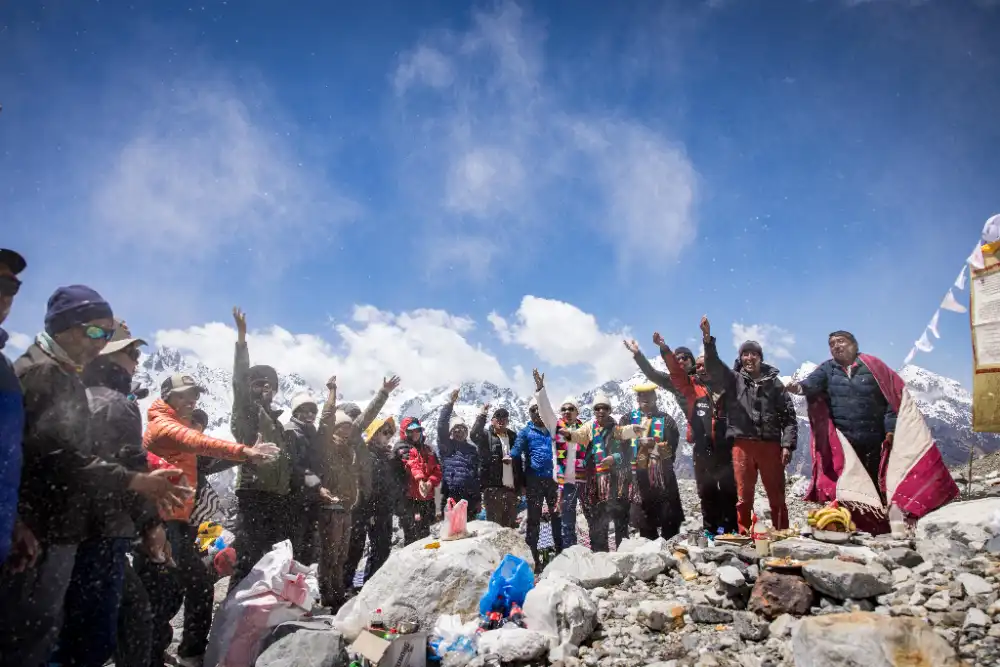
“But to see how quickly the glacier has retreated is incredibly sad, on a personal level, and as a researcher. As a researcher, I studied where the glacier used to be, in 1981. It feels like a dream, to see how drastically it’s changed in those 50 years and how those changes have accelerated since my first trip here in 2011, to know and see with my own eyes the pace of the retreat and how low the glacier has sunk since I’ve been coming here. Locally, the pasture land is now so dry the yak herders cannot graze their livestock here.”
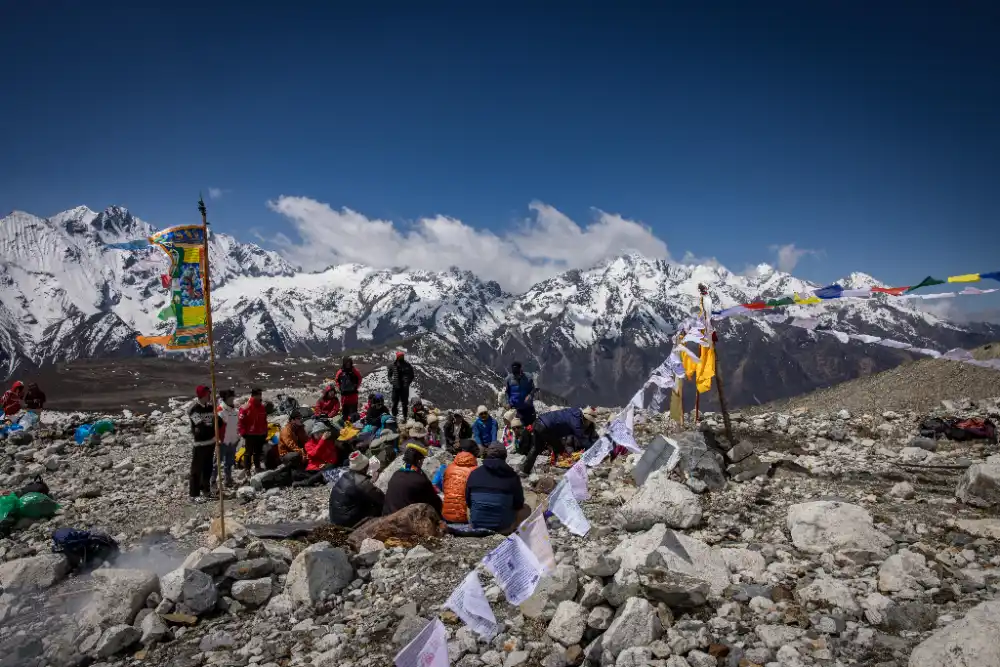
Joshi described the visual transformation: “Instead of a white glacier, it’s rocky, with debris. Aesthetically, and on a personal level, this is incredibly sad. As a researcher, I know what huge implications – the exposed bedrock means there’s no longer albedo, so this will trigger further temperature rise. And of course the loss of this and other glaciers has implications for water, livelihoods, and more downstream.”
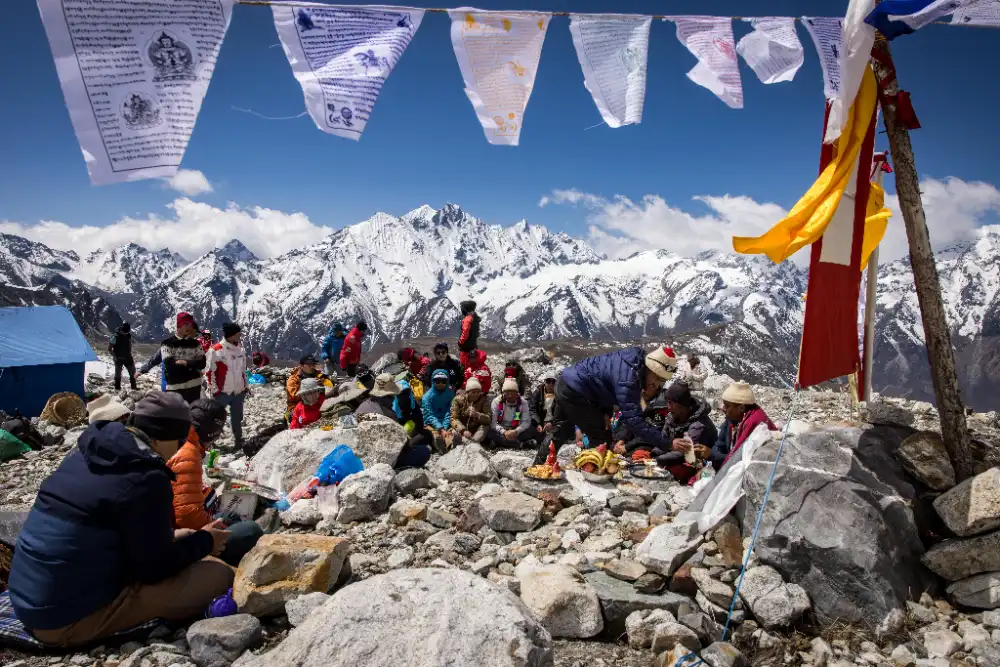
Yala’s accessibility from Kathmandu has made it a crucial training ground for glaciologists. Since 2011, over 100 glaciologists from Afghanistan, China, India, Nepal, and Pakistan have trained at this site, with the glacier serving as a research site for 50 years. Joshi noted that the ceremony honored the glacier as it has been an “open textbook” for young researchers and glaciologists.
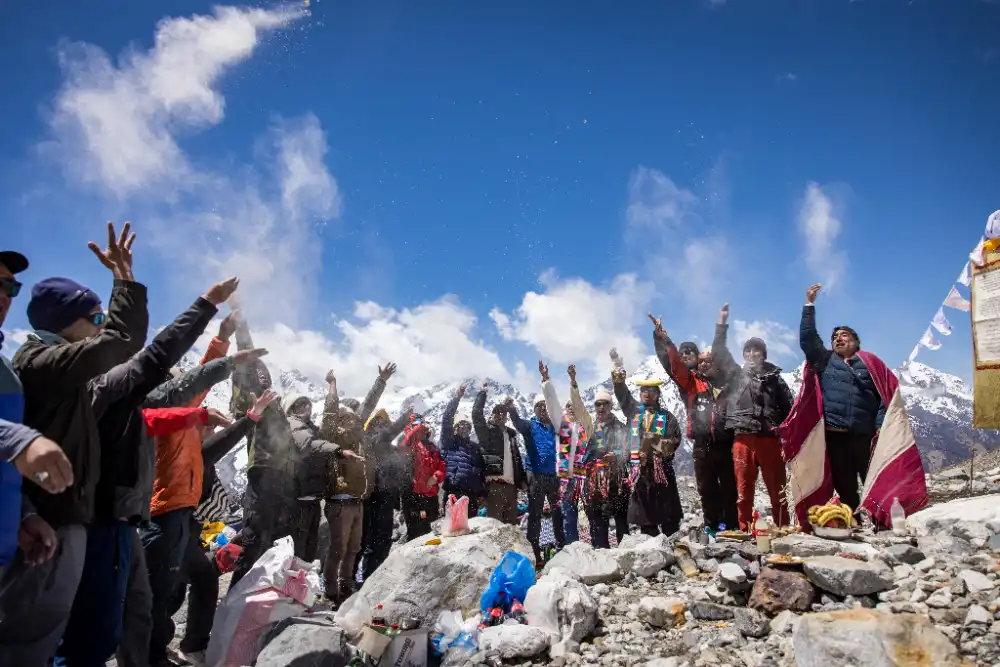
Despite their importance in providing water for river flow on which billions rely, and the fact that mountains in the region hold the largest mass of ice and snowpack outside the two geographic polar regions, glaciers in the Hindu Kush Himalayas are hugely understudied.
Yala is one of just 38 glaciers in the Hindu Kush Himalayas with in-situ measurements, providing crucial data on the speed and extent of ice losses. These measurements, combined with satellite imagery and geodetic surveys, have created an invaluable record of glacial retreat that scientists use to understand climate impacts across the region. The Hindu Kush Himalayas are experiencing severe glacial retreat with implications for nearly two billion people downstream.
Global Ice Crisis Accelerates
The ceremony occurred against a backdrop of accelerating global glacier loss. In 2024, all 19 glacier regions worldwide experienced net mass loss for the third consecutive year, losing 450 billion tonnes of ice – the fourth-worst year on record. Since 1975, glaciers have lost about 9,000 billion tonnes of ice, equivalent to an ice block the size of Germany with a thickness of 25 meters.
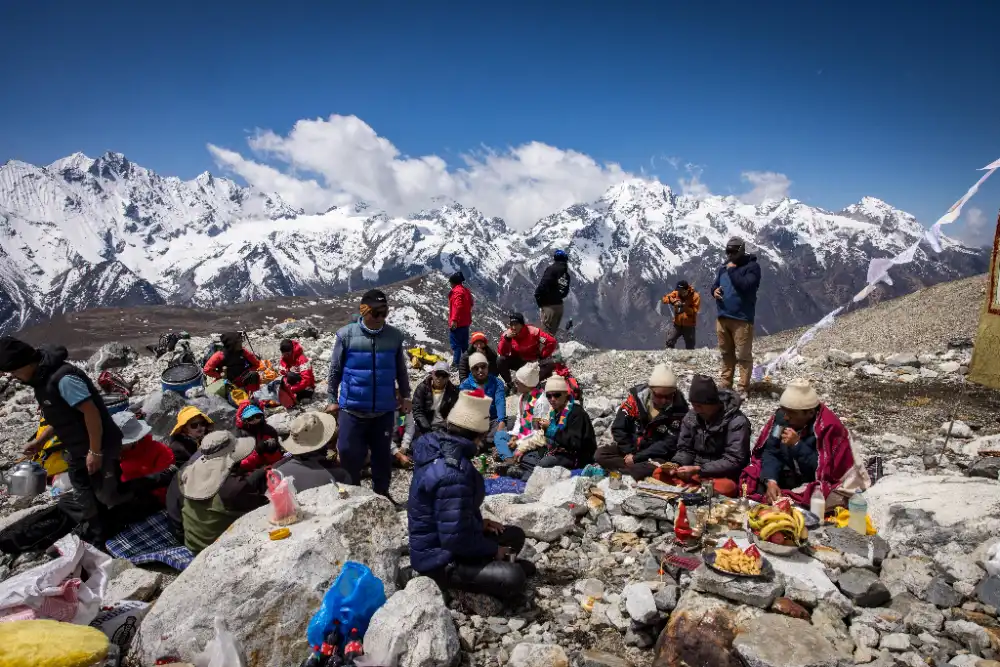
“Preservation of glaciers is not just an environmental, economic and societal necessity. It’s a matter of survival,” said WMO Secretary-General Celeste Saulo.
Pema Gyamtsho, Director General of ICIMOD, called Yala’s disappearance “totemic of the disastrous deglaciation and loss of snowpack we’re now seeing unfold across Earth’s mountains at a pace that far outstrips scientists’ worst-case scenarios”.
He emphasized the broader implications: “It’s vital that business and political leaders worldwide understand that this region’s future prosperity and security – our food production, our water supplies, our industries, our energy, and our national security – are intimately bound up in the preservation of glaciers. Our common future is absolutely contingent on greater regional cooperation to manage these shared resources, and rapid emissions reductions and the acceleration of the transition to clean energy to limit glacier losses.”
Messages to the Future
Two granite memorial plaques were unveiled at Yala’s current edge, carrying messages in English, Nepali, and Tibetan. Nepali author Manjushree Thapa inscribed: “Yala, where the gods dream high in the mountains, where the cold is divine. Dream of life in rock, sediment, and snow, in the pulverizing of ice and earth, in meltwater pools the colour of sky. Dream. Dream of a glacier and the civilizations downstream. Entire ecosystems: our own sustenance. The cosmos. And all that we know and all that we love.”
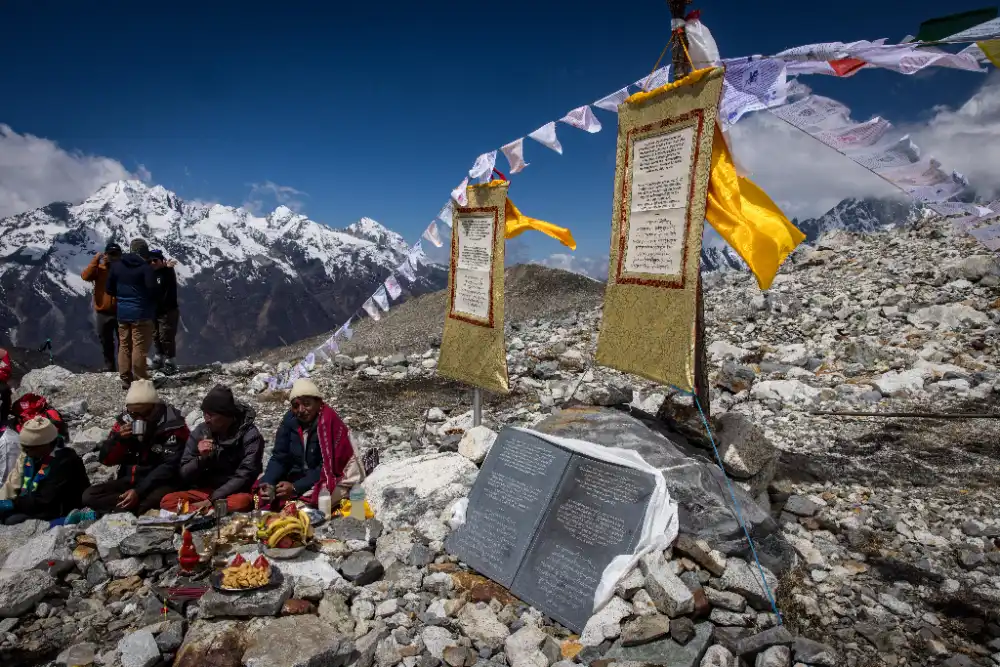
Icelandic writer Andri Snaer Magnason left a more direct message to future generations: “A message to the future: Yala glacier is one of 54,000 glaciers in the Hindu Kush Himalayas, most of which are expected to vanish this century due to global warming. This monument is to acknowledge that we know what is happening and what needs to be done. Only you know if we did it. May 2025 426ppm CO2 [parts per million of carbon dioxide in the atmosphere].”
Both authors backed ICIMOD’s #SaveOurSnow campaign and asked for their author fees to be donated to local climate action.
Yala is the first glacier in Asia and the third worldwide to carry Magnason’s message, following OK Glacier in Iceland (2019) and Ayoloco Glacier in Mexico (2021).
Water Security for Billions at Risk
Himalayan glaciers provide critical water to nearly two billion people, but are melting faster than ever before due to climate change. The loss of these “water towers” threatens drinking water, agriculture, and hydropower generation across Asia. Understanding water security in mountain regions is becoming increasingly critical as temperatures rise.

Shyam Saran, former foreign secretary and special envoy for climate change for India, who attended the Government of Nepal’s Sagarmatha Sambaad event, provided a stark assessment: “I’ve trekked the mountains of the Himalayas for decades. The pace and scale of the deglaciation and loss of snowpack happening now, and which I’ve seen with my own eyes, is truly breathtaking.”
“While this thawing is currently upping the water available for Asia’s major economies and huge urban centres, we know this water is set to decline from mid-century – just 25 years from now. This has major implications for this region,” Saran warned.

He continued with a sobering observation: “Tragically, the issues that divide us today, and which are rightly commanding so much global attention right now, are set to be dwarfed by the kinds of disasters we’ll be facing if we don’t recognise our interconnectedness with the ecological systems that support us, and act together, for our common future, now.”
Current projections suggest glaciers in western Canada, the United States, Scandinavia, central Europe, the Caucasus, and New Zealand “will not survive the 21st century” at current melting rates.
Cultural and Spiritual Dimensions
Beyond their practical importance, glaciers hold deep spiritual meaning for mountain communities. The Buddhist ceremony at Yala reflected this connection, with prayer flags fluttering as monks performed traditional rituals. For Indigenous Peoples across Asia, Latin America, the Pacific, and East Africa, glaciers are often considered sacred spaces and the abode of deities.
Similar Posts
Global Efforts to Preserve Ice
The tribute coincided with major international initiatives. The United Nations declared 2025 as the International Year of Glaciers’ Preservation, with March 21st established as the annual World Day for Glaciers. UNESCO and WMO are coordinating international efforts supported by over 75 organizations and 35 countries.
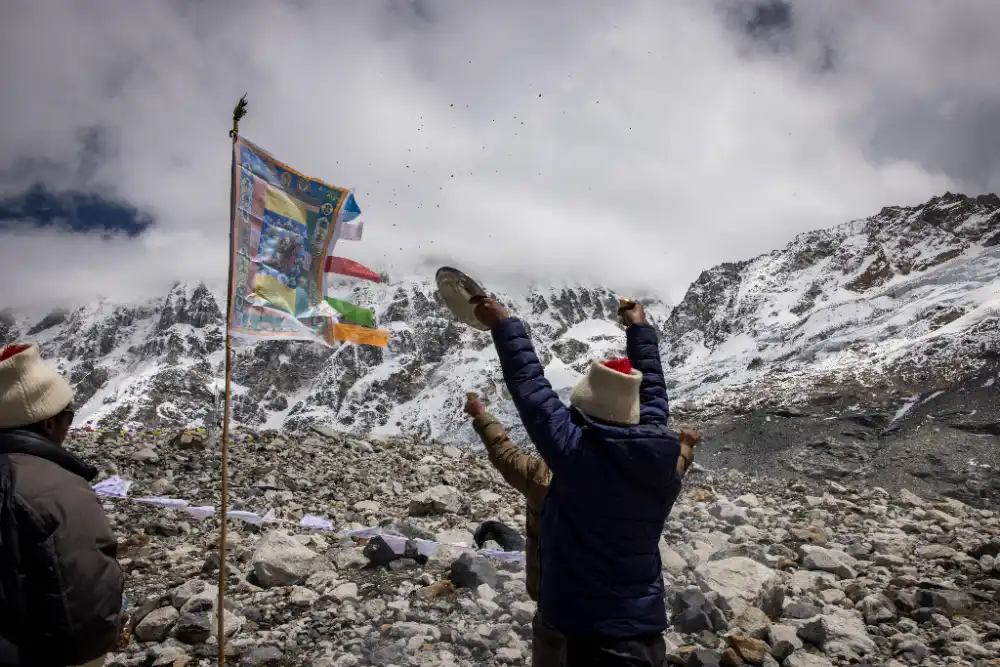
Yala Glacier was also included in the Global Glacier Casualty List, launched in 2024 through collaboration between Rice University, the University of Iceland, the Iceland Glaciological Society, the World Glacier Monitoring Service, and UNESCO.
Rising Disaster Risks
As glaciers retreat, they create unstable glacial lakes that threaten downstream communities. Glacial Lake Outburst Floods (GLOFs) are becoming more frequent, with rising temperatures increasing both severity and frequency of avalanches, landslides, and flash floods. The Hindu Kush Himalayas face increasing flood risks as climate change accelerates.
About 1.1 billion people live in mountain communities, which suffer the most immediate impacts of glacier loss due to increasing natural hazards and unreliable water sources.
Looking Forward: Action and Adaptation
Pema Gyamtsho emphasized that “this region’s future prosperity and security – our food production, our water supplies, our industries, our energy, and our national security – are intimately bound up in the preservation of glaciers”.
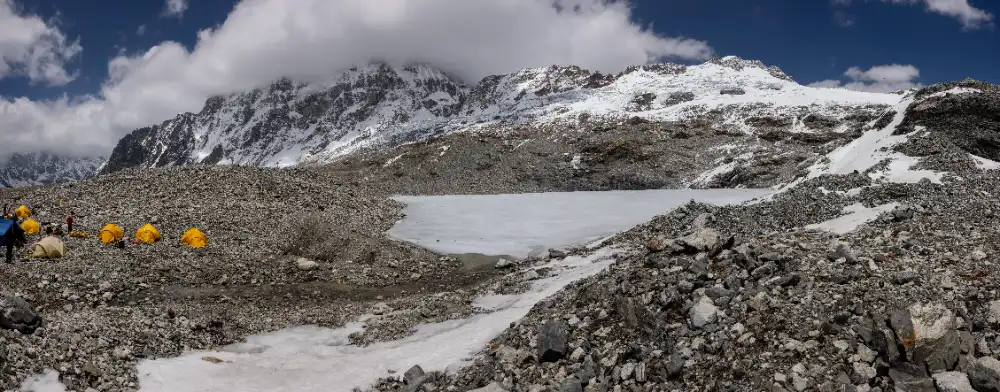
The path forward requires both mitigation and adaptation:
Immediate Actions Needed:
- Urgent greenhouse gas emission reductions to slow warming
- Enhanced monitoring systems for glacial lakes and GLOF risks
- Investment in early warning systems for mountain communities
- Regional cooperation for transboundary water management
Long-term Strategies:
- Develop climate-resilient water infrastructure
- Support mountain communities in adapting livelihoods
- Integrate traditional knowledge with modern monitoring
- Create sustainable tourism models that value glacier preservation
The Human Connection
The memorial at Yala represents more than scientific data or policy discussions. It reflects humanity’s capacity for grief, remembrance, and hope. As communities bid farewell to ancient ice, they’re also forging new relationships with their changing environment.
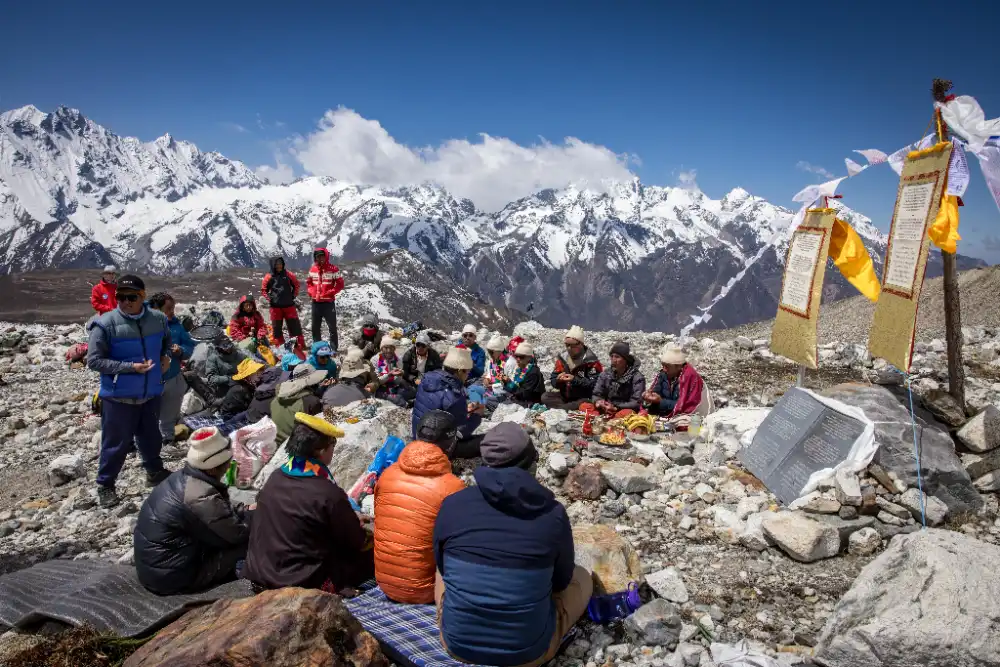
Joshi expressed his hopes for the tribute’s impact: “Yala is representative. This issue is not just about glaciers in Nepal. This is happening across the Hindu Kush Himalaya, and the world. We are losing our glaciers. Yala represents the true casualties – all glaciers in Nepal are now receding – of global warming.”
“My hope is that by doing this event, now, before the glacier is gone, we will give glacier losses more prominence. There’s still not enough awareness. Personally and professionally, it feels incredibly important to make the sorts of dramatic losses we’re seeing in Yala visible – we felt like we needed to show people the reality. It feels like noone’s paying sufficient attention to this issue and it is so consequential.”
“I’m hoping we’re able to make more people aware, and to share what I learned and experienced from Yala, from monitoring this glacier, especially for those who cannot come here and see this for themselves, and to show them that this glacier and the world’s glaciers are our lifelines.”
Scientists warn Yala may disappear by the 2040s if warming trends continue, potentially becoming among the first Nepali glaciers declared “dead” worldwide. But its legacy as a research site and teacher will endure, having trained generations of scientists who now work to protect remaining ice.

The ceremony at Yala serves as both eulogy and call to action. While we cannot save this particular glacier, the knowledge gained from studying it – and the urgency its loss represents – may yet help preserve others. In a warming world, every fraction of a degree matters, and every glacier saved represents countless lives and livelihoods protected.
The mountains keep their own time, but human action determines whether that time includes ice. The choice, as Magnason’s message suggests, remains ours to make.
